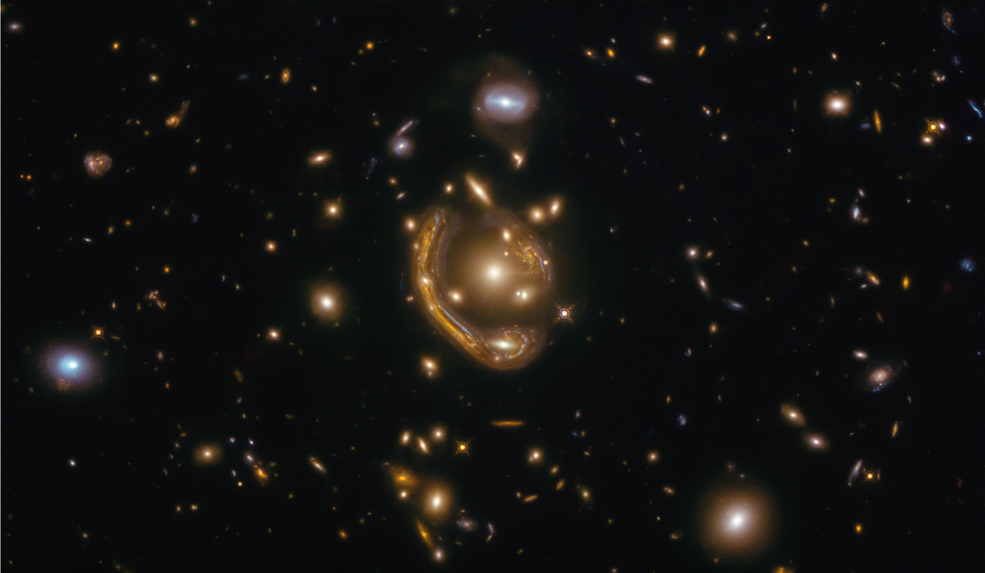Reviewed by Alex SmithSep 24 2021
The glamour shots of the universe taken by the Hubble Space Telescope are very much revealing that every time they lead to some kind of discovery.

Image Credit: Saurabh Jha, Rutgers, The State University of New Jersey.
A recent image uncovers a remote galaxy significantly magnified and distorted by the effect of gravitationally warped space. Post public release, the astronomers used the picture to measure the distance of the galaxy, which is approximately 9.4 billion light-years. This places the galaxy at the highest epoch of star formation in cosmic evolution.
In this specific snapshot, a scientific breakthrough followed the release of a Hubble observation of a fascinating example of a deep-space optical phenomenon called an “Einstein ring.” The photo published in December 2020 was considered an example of one of the largest, near-complete Einstein rings ever observed.
The significantly high rate of star formation in the brightest and very dusty early galaxies held stars being generated at a thousand times higher rate than the speed in the Milky Way galaxy. This can account for the quick formation and expansion of existing giant elliptical galaxies.
The partial ring-like appearance of this object can be elucidated through a phenomenon known as gravitational lensing. This causes the light shining from a distant galaxy to be warped by the gravity of an object between its source and other observers. The impact was first proposed in 1912 by Albert Einstein and further worked into his theory of general relativity.
Here, the light from the galaxy has also been magnified by a factor of 20. This magnification was enhanced by nature and improved Hubble’s observing potential equivalent to that of a 48-m aperture (157 feet) telescope. Additionally, the lensing effects produce multiple apparitions around the curved arc of the single background magnified galaxy.
For deriving the physical characteristics of the galaxy, astronomers have to accurately model the impacts of the lensing on the galaxy’s image.
Such a model could only be obtained with the Hubble imaging. In particular, Hubble helped us to identify the four duplicated images and the stellar clumps of the lensed galaxy.
Anastasio Díaz-Sánchez, Study Lead Investigator, Universidad Politécnica de Cartagena
The first Hubble observation was done by Saurabh Jha of Rutgers, The State University of New Jersey. The objective of his team was to use Hubble’s sharp image to unravel elaborate complex structures in the ring areas.
The object, named GAL-CLUS-022058s, is situated in the southern hemisphere constellation of Fornax (the furnace). The image was specially called “Molten Ring” by Jha, which relates to its appearance and host constellation.
Einstein Ring Spotted by Hubble
This image, taken with the Hubble Space Telescope, shows a distant galaxy located in the constellation Fornax. It is the largest and one of the most complete Einstein rings ever discovered. This object’s unusual shape is the result of gravitational lensing. Albert Einstein, in his general theory of relativity, first theorized that a large gravitational field could act as a lens. Gravitational lensing in action video: NASA, ESA & L. Calçada. Video Credit: NASA’s Goddard Space Flight Center, Paul Morris: Lead Producer.